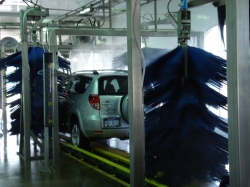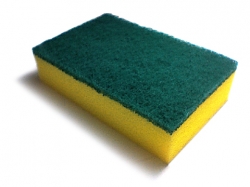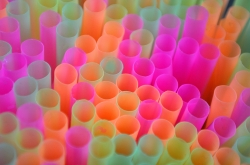Once your food starts to look like a smoothie, it's ready to go to the next part of your digestive system. Welcome to your small intestine! This long, skinny pipe twists and turns just like a maze. It's the longest part of the trip your food takes. There's a good reason for that. This is where your body pulls out all the valuable stuff it needs to keep living. That's not all, though! By the time your food has made it this far, it still has not totally broken down. Your intestine will need some help . . .
Let's take our first trip away from the tunnels and caves of your stomach. Have you ever been inside a car wash? Soaps are sprayed onto the car to make it clean. They come from big bottles that are outside the car wash. Just like in a car wash, you have many parts around your intestine that spray things onto your food. Your
liver is an organ that sits above your small intestine and makes bile, which helps to break down the fats you eat. Your liver also soaks in your blood, storing good stuff and getting rid of any bad stuff you might have swallowed. It's way smarter than a car wash though. Instead of throwing away the bad stuff, it turns it into more bile to use!

Hold on a minute. What are you spraying all over my car?
CurranH (talk) (Uploads), Public domain, via Wikimedia Commons
Let's look at another part of the car wash. When your car is being washed, there are different soaps that work together to get it really clean. The bile from your liver cannot break down all the food by itself. To help you out, you have a thing below your stomach that looks like a yellow carrot. What does it do? Your
pancreas is an organ that makes a fluid filled with salt and enzymes that help you to break down sugars, proteins and fats. Your pancreas also loves sugar! That's a story for another article.
Your body is now ready to take in the food! Some of it needs to go into your blood, some to your muscles, some to your heart. How does it do that? It cannot just pull it in in big chunks. That would be like you trying to put your hand through a wall. Instead it must pull it through the walls of your the intestine a little bit at a time.
Absorption is what happens when something is soaked up, like a sponge pulling in water. Even a sponge is not as good at soaking up things like your intestine.

This will soak something up.
CurranH (talk) (Uploads), Public domain, via Wikimedia Commons
Your body wants to soak up as much of this stuff as possible. In order to do that it needs to have many parts of your small intestine touching it. Think of water sliding down a pipe. Sure, the water is touching all sides, but look at all that unused empty space in the middle! It needs more surface area or more parts that can touch. So your body came up with a great idea.
Villi are bumps in your small intestine that stick out so there is greater area to soak up the food. Think of a lot of sponge-like baby fingers grabbing for some candy. That's kind of a scary thought. Maybe more like a lot of straws.

Now these will suck up a lot of nutrients!
There! You got all the good stuff out of that piece of food. And you did not even have to think about it! The different parts of your gut work all by themselves. Wait, there's one last, long tunnel ahead. What could this be for? Only one way to find out.
References:
PubMedHealth. "How Does the Pancreas Work?" U.S. National Library of Medicine, 2011. <http://www.ncbi.nlm.nih.gov/pubmedhealth/PMH0016286/>
Kids Health. "Digestive System: 22 Feet Isn't Small at All." Kids Health, 2012. <http://kidshealth.org/kid/htbw/digestive_system.html#a_22_Feet_Isn_t_Small_at_All>